|
 Dwight Peck's personal website Dwight Peck's personal website
Scenes of Parma, Emilia-Romagna, February 2016
A week's getaway in northern Italy
You may not find this terribly rewarding unless you're included here, so this is a good time for casual and random browsers to turn back before they get too caught up in the sweep and majesty of the proceedings and can't let go.
Parma: More churches, and the Cittadella

It's a new day, time to bound out of bed and rush downstairs before they stop serving lunch.
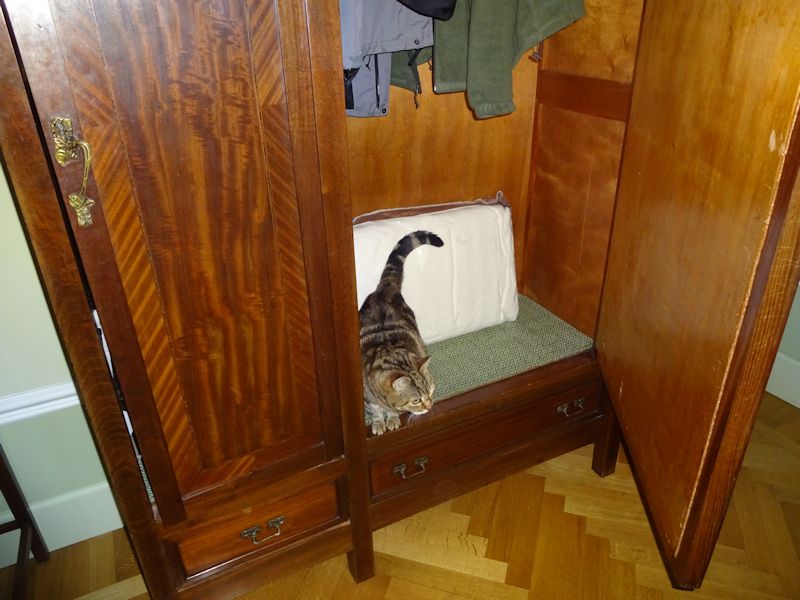
And it's time for the Squirrel to come out of the closet.

Kristin's shoe repairs are ready, and I'm gazing again into the homey ham-and-cheese shop.
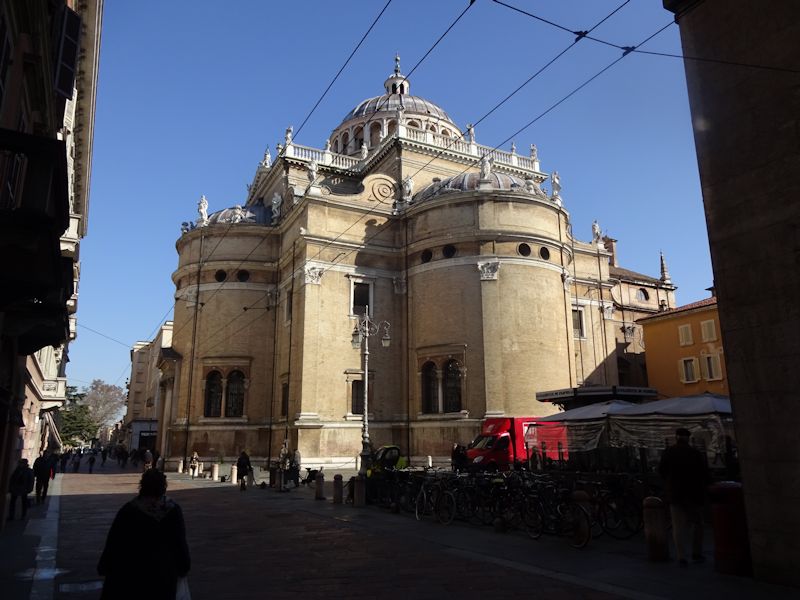
We're back for another look at the Sanctuary of Santa Maria della Steccata on Garibaldi Street.

This, it will be recalled, is a Greek cross sanctuary that was completed in 1539 chiefly in order to house that Madonna and Child icon above the altar. And to house all the dead Farneses.

That's the famous wonder-working icon.

We feel strangely invigorated. That was fun. Onward.
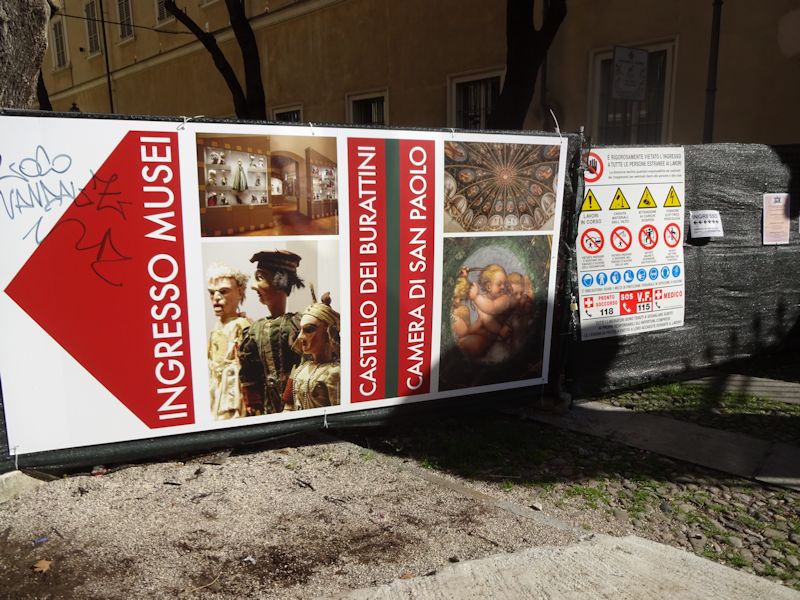
Now it's time for the Camera di San Paolo, closed yesterday but today we're in good time. The Benedictine monastery of San Paolo was founded in the 10th century, and with a population of nuns largely from the upper classes, the convent acquired a good deal of independence from episcopal control over the years. The monastery, like most, was suppressed by Napoleon in 1810 and turned over to the city.
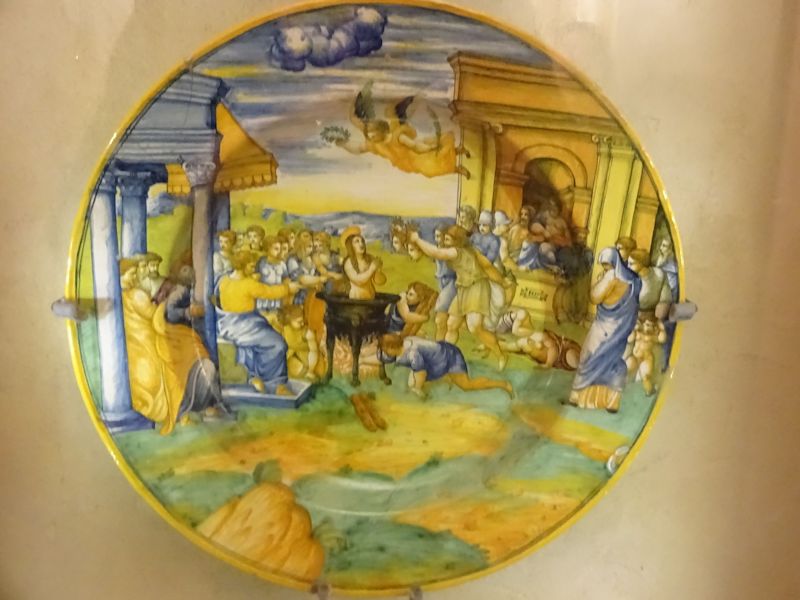
A festive dinner service
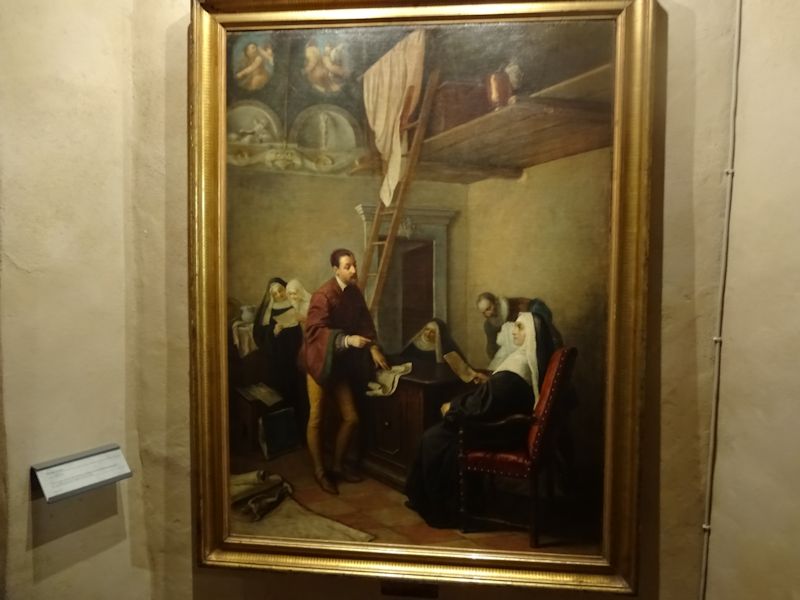
This is an undistinguished 19th century picture of Correggio, in 1519, trying to sell his plans for the decorations to the brilliant humanist Abbess, Giovanna da Piacenza. She decided to let him go for it.
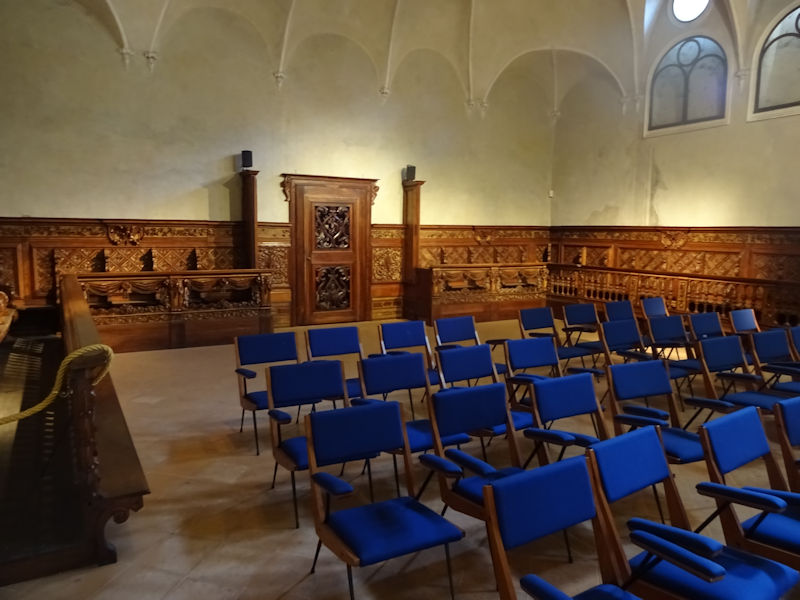
The conference room. We're actually in another wing of the monastery that was converted into the Pinacoteca Stuard in 2002, which we visited yesterday.
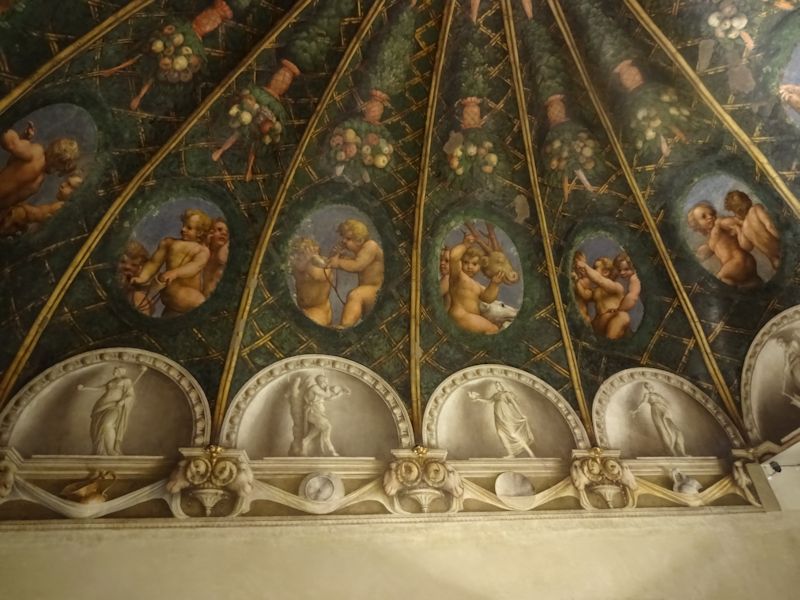
Correggio's concept for the domed ceiling of the abbess's private dining room, a garden pergola effect with fake little windows, with happy cherubs peeking in, and monochrome lunettes meant to look like marble statuary.
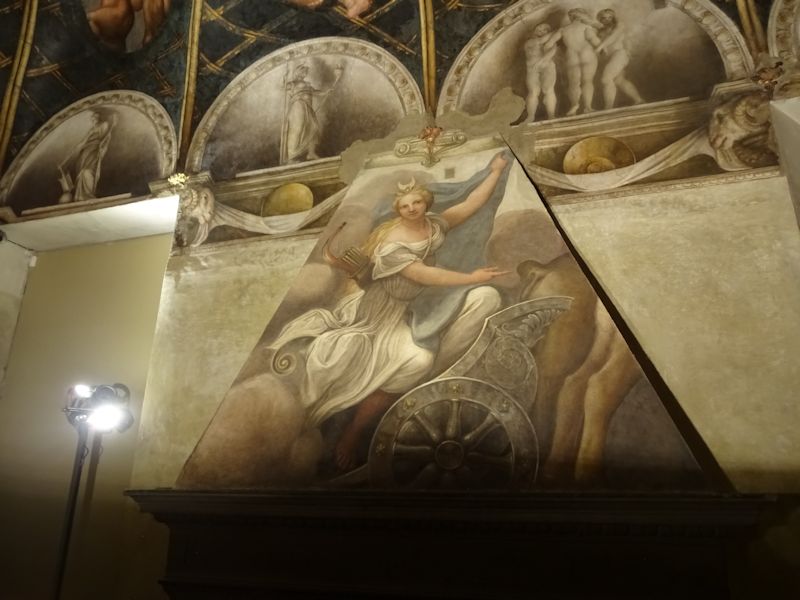
And over the fireplace, the pagan goddess Diana. In a nunnery.
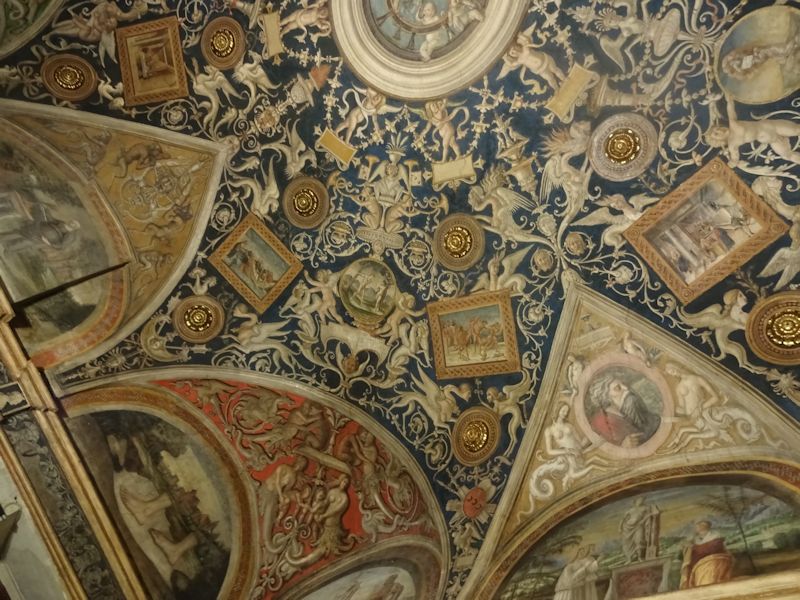
The abbess's private room has a ceiling full of strange frescoes by Alessandro Araldi, done in 1514, with as ample a collection of grotesqueries as in any convent anywhere.
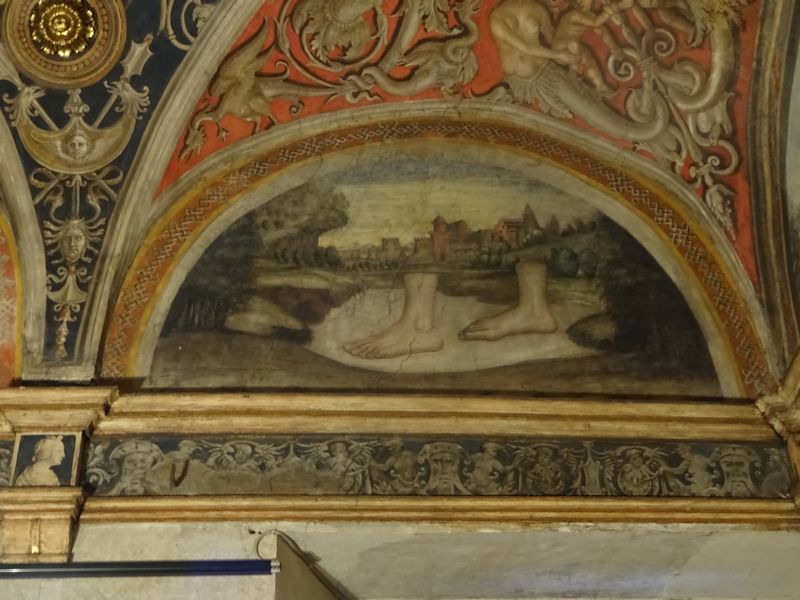
-- He was here just a moment ago!
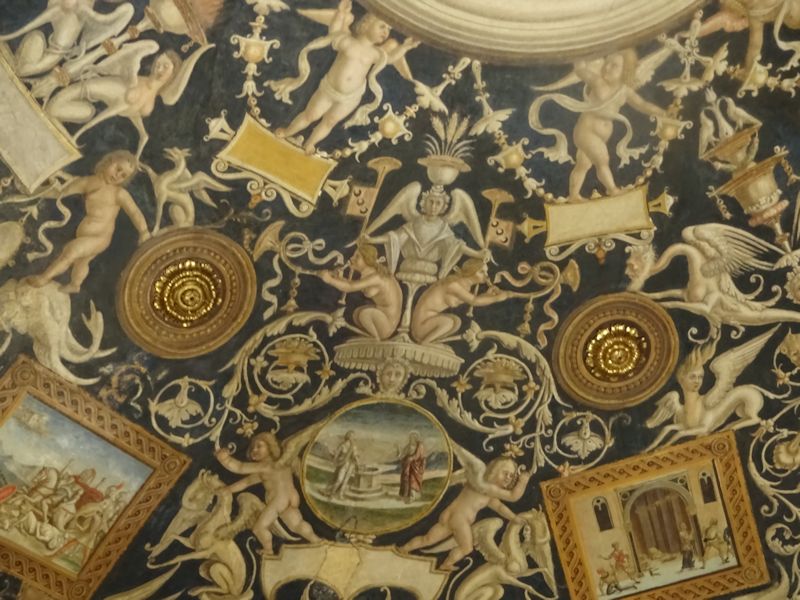
More grotteschi cheek by jowl

Cheerful subjects for long evenings
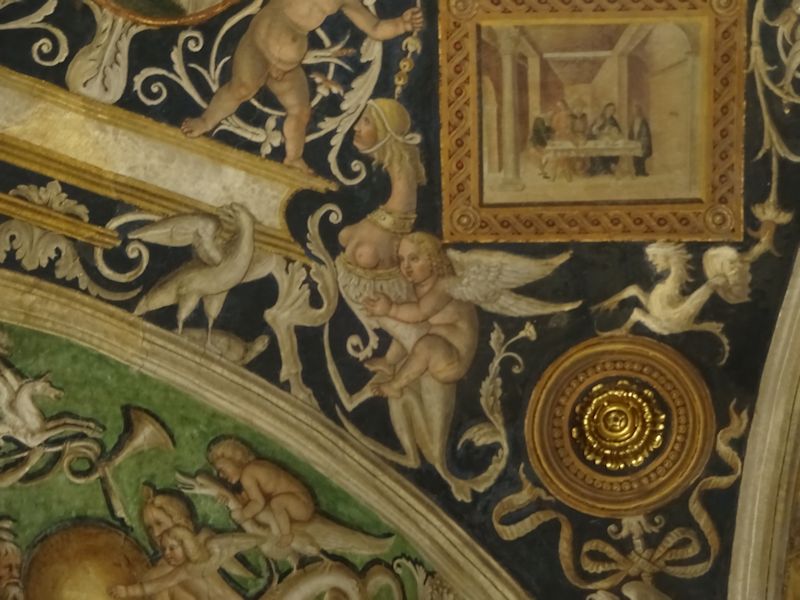
Giovanna da Piacenza must have been a very fun abbess.
(In fact, she did draw complaints from the hierarchy from time to time.)
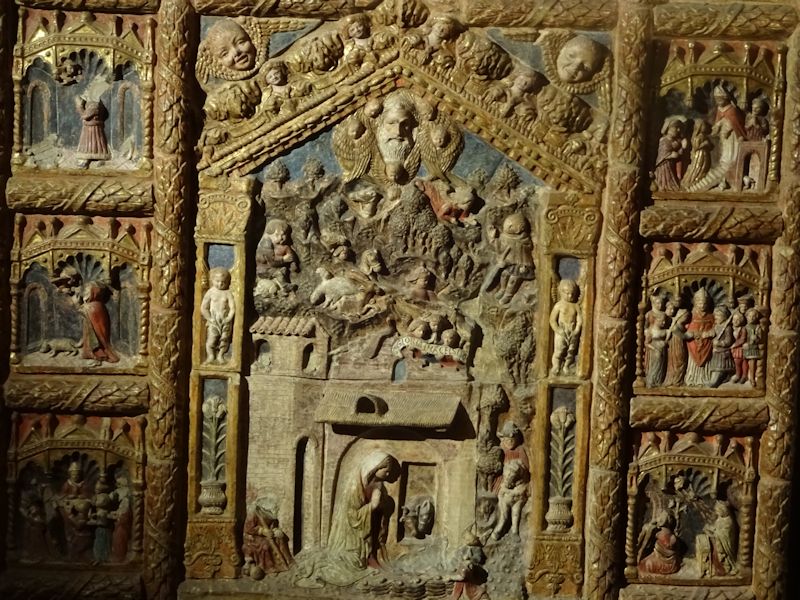
A terracotta Nativity of the late 15th century, probably once very colorful
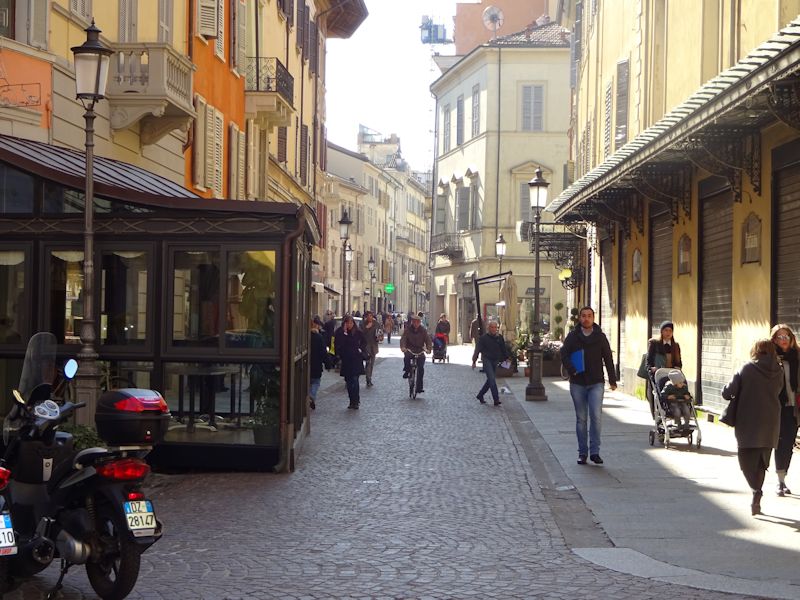
Back out onto Cavour Street
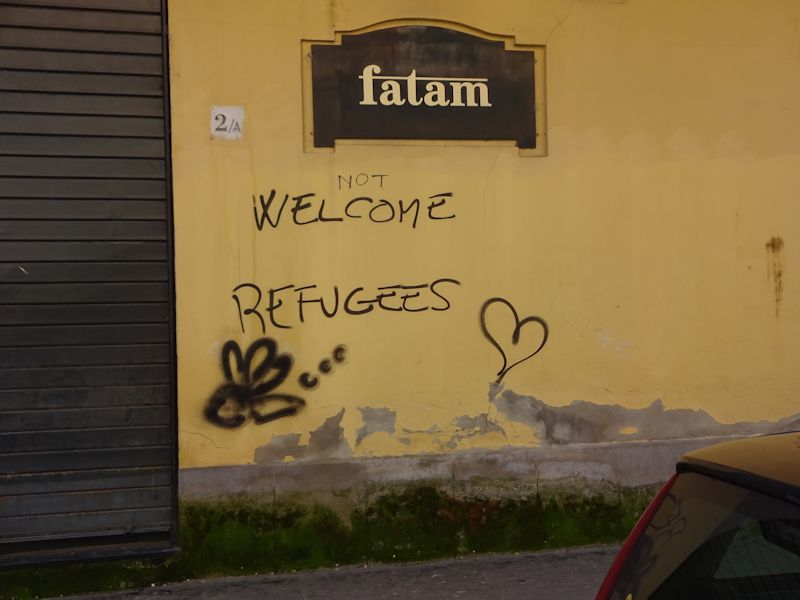
A witty afterthought
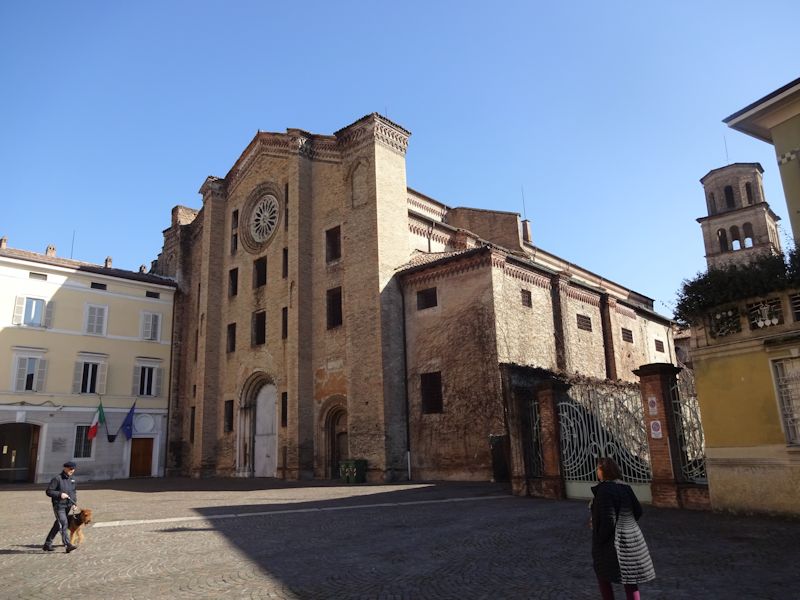
This is the Gothic church of San Francisco del Prato, a Franciscan complex looking onto the piazza of the same name, facing the Casa della Musica. The church was started in the 13th century and had a large complement of art works, but most of it was looted by Napoleon's troops in 1803. Most of what's been got back is now in the Galleria Nazionale di Parma -- after the church's functions were suppressed by the French in 1800, it served as the city jail until recently.
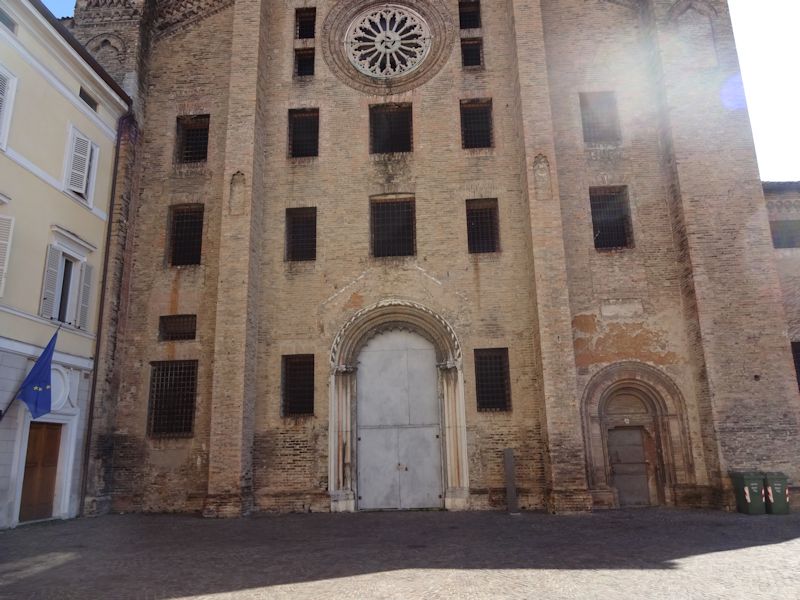
Hence the bars on the windows. The solitary lockdown cells were in the bell tower.
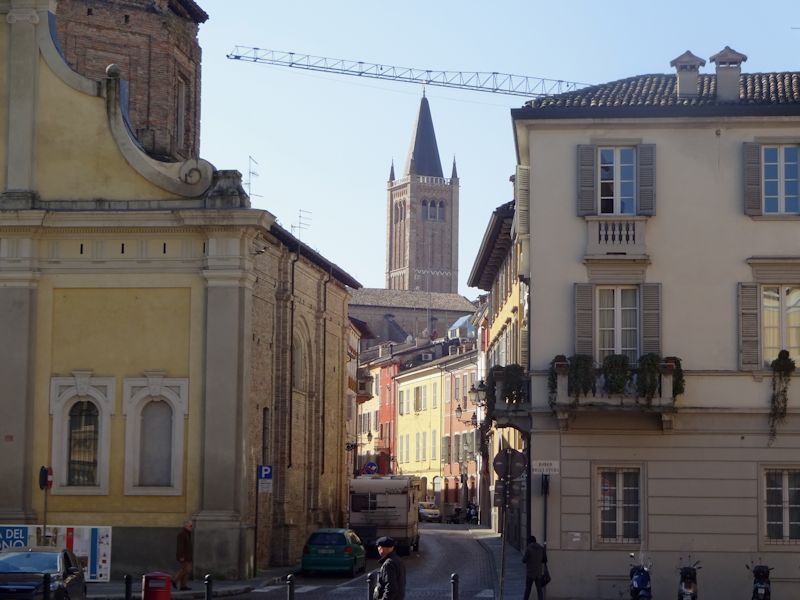
The bell tower of the Duomo; we're circling through the neighborhoods back towards the cathedral.

The cathedral dome

Along the walls of the huge Benedictine monastery and convent of San Giovanni Evangelista, this unassuming door leads to the medieval pharmacy that served the monks and any pilgrim guests being given hospitality. The original entrance was internal.
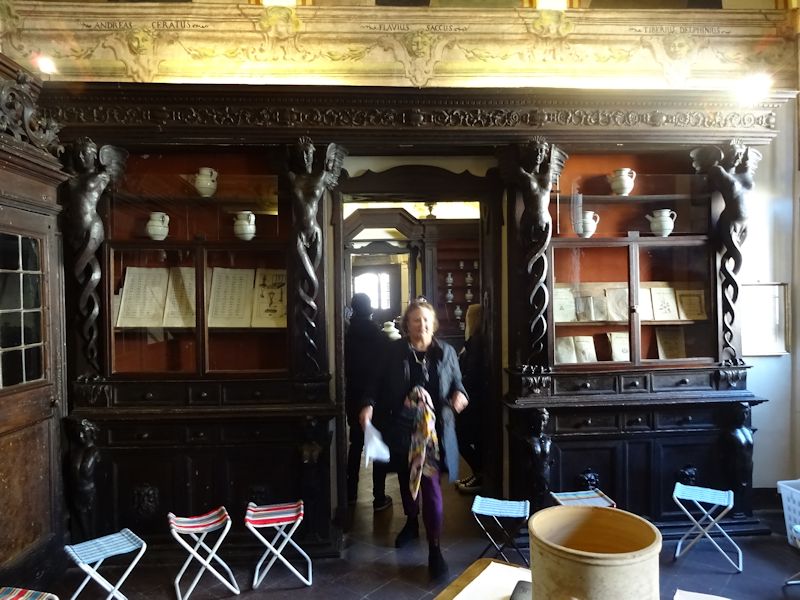
The huge convent itself was established in 980 but the apothecary was first mentioned in documents from 1201; the present woodwork, etc., comes from the late 16th century.

In 1766, however, the civic authorities ordered the pharmacy to be made available to the public or closed down, so the interior passageways were blocked up and a door opened to the street. It ceased commercial operations in the late 19th century, and was opened to the public as a medical museum in 1951.
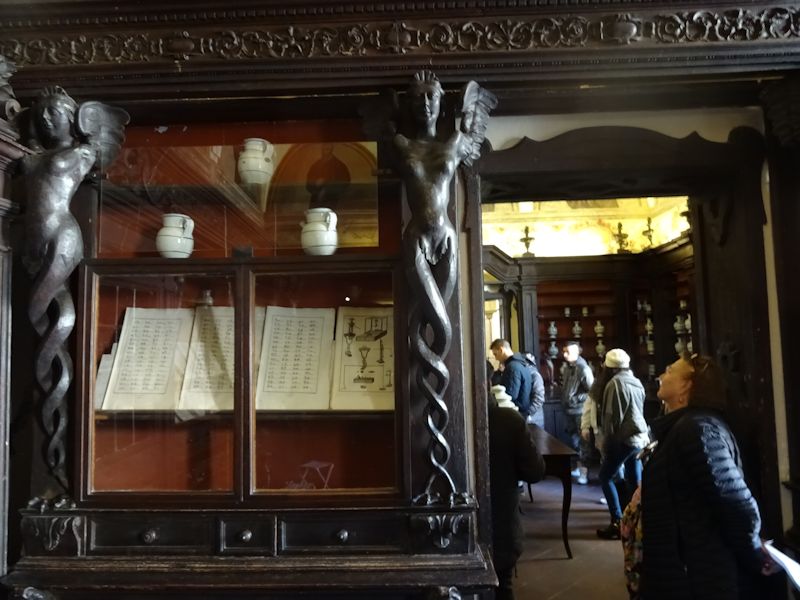
-- Oh sir, it appears that your humors are unbalanced. No worries, we'll just bleed you until you recover.
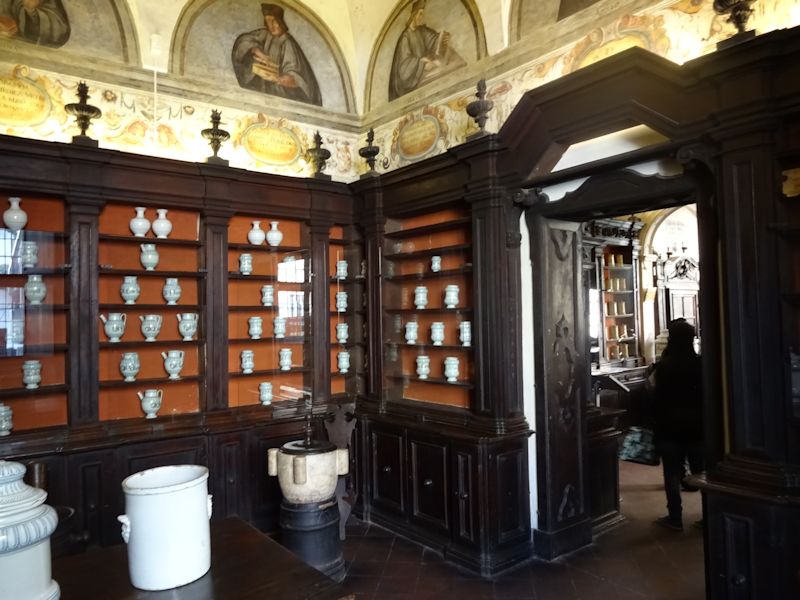
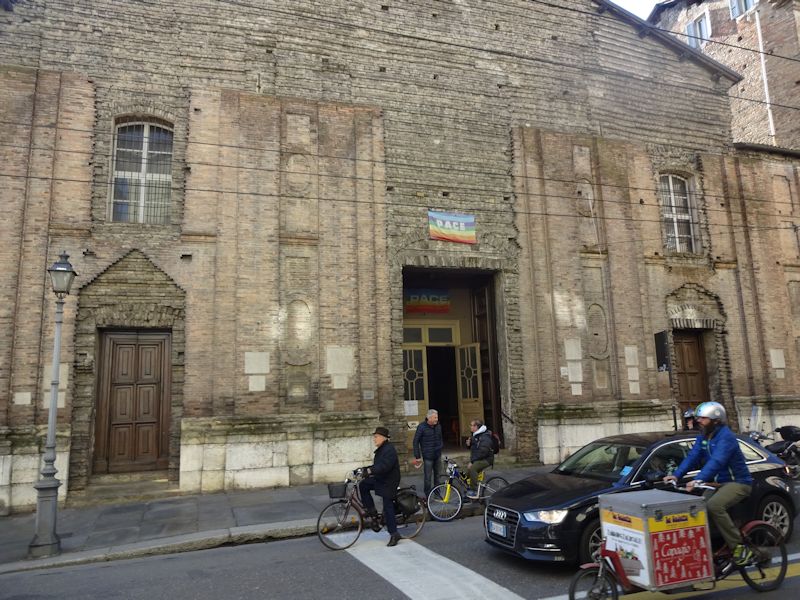
We're on our way out to the southern end of the old town, and passing the Chiesa Parrocchiale Santa Cristina on the Strada della Repubblica, the east-west high street (called Strada Mazzini just two blocks off to the right). It was built in the 10th century but thoroughly redone in 1649. The façade was never finished, and the apse was never even begun.

A nave with two aisles, with four chapels on each side; nothing, on first inspection, looks terribly interesting.
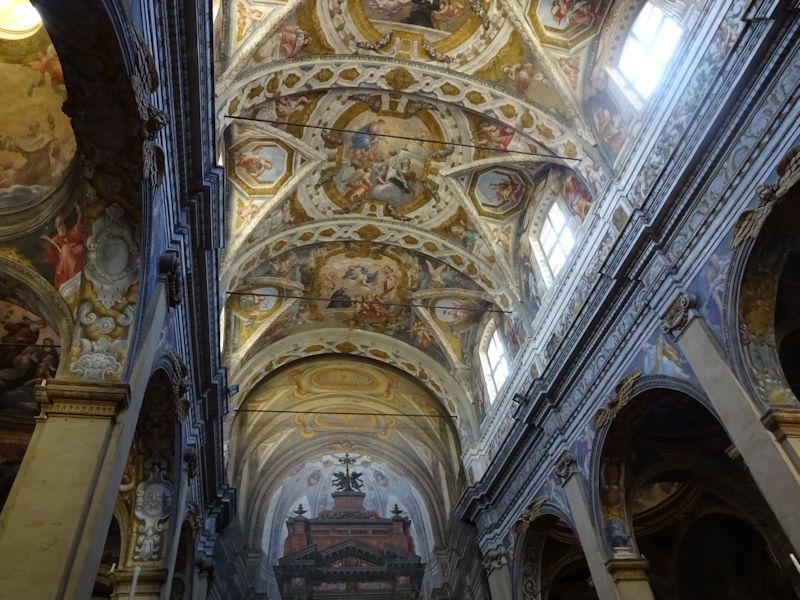
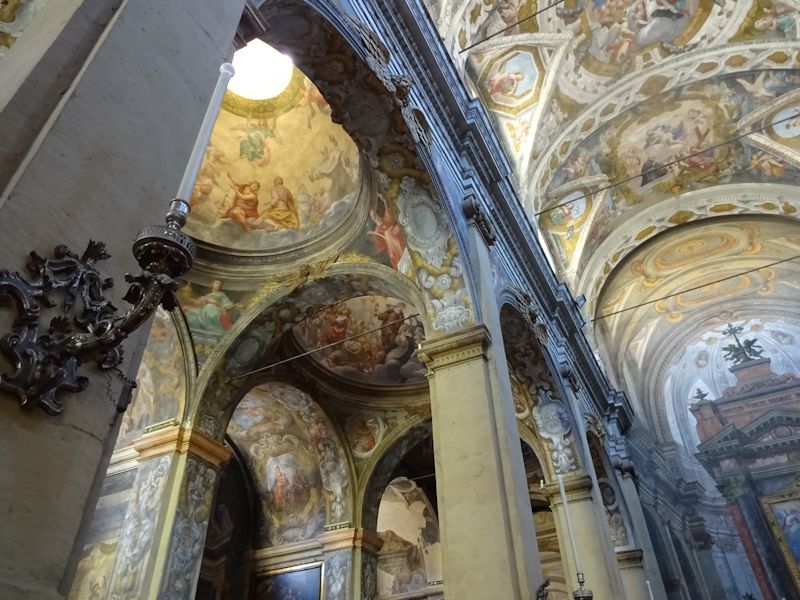
The fresco decorations are late 17th and early 18th century, not too many surprises.
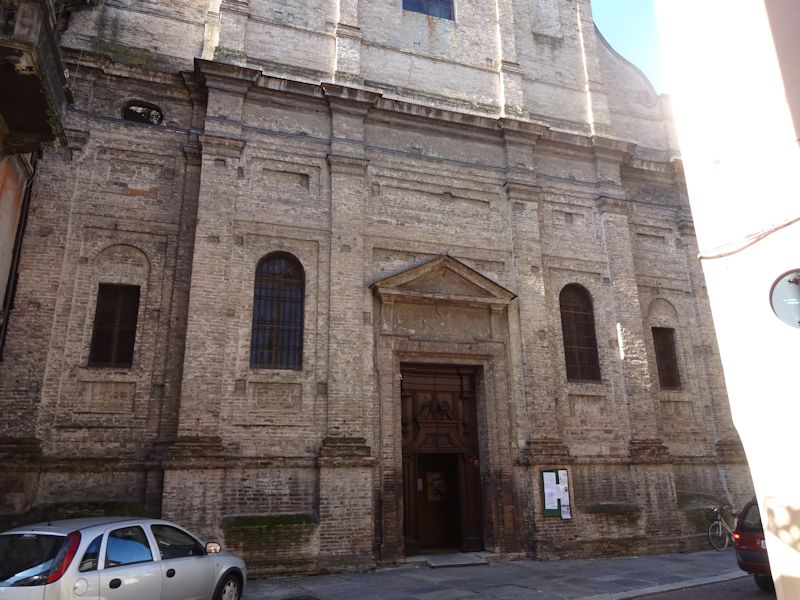
The Chiesa di San Quintino on the Str. XXII Luglio, still walking south. One of the oldest churches in the city, it was founded in about 830, just outside the city walls. It was then rebuilt in the 12th century, but when it was donated to the Benedictine monks, in about 1560, they thoroughly rebuilt it again.
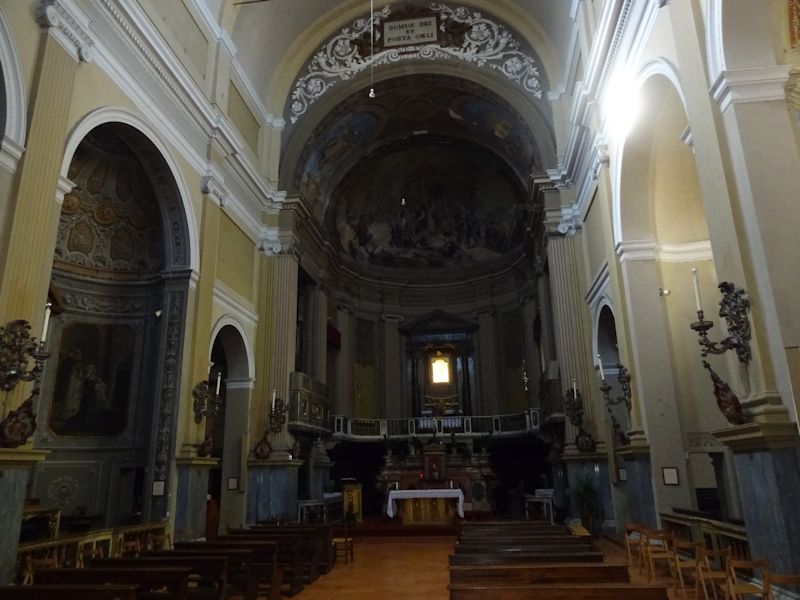
The nave was redesigned in the 19th century, when the apse and chancel were added. Let us not tarry.

Padre Pio and a friend
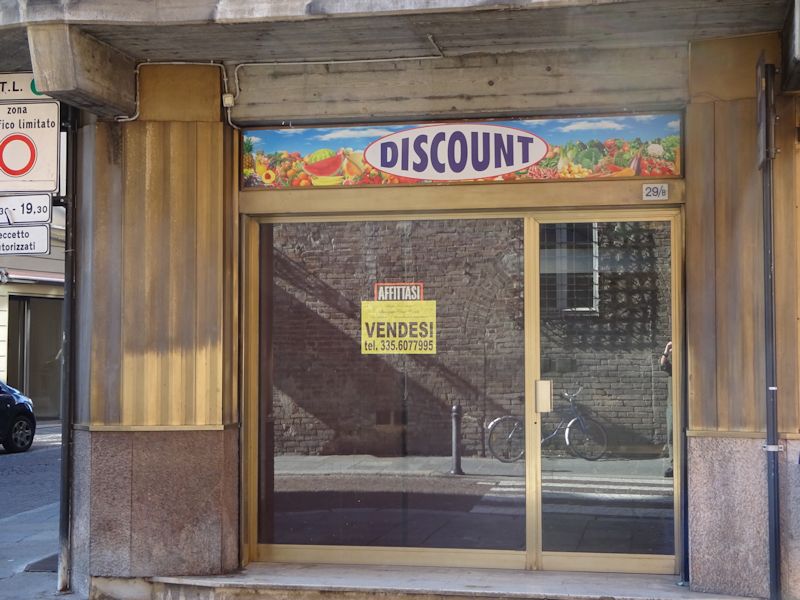
To rent! To buy! A bargain!!!
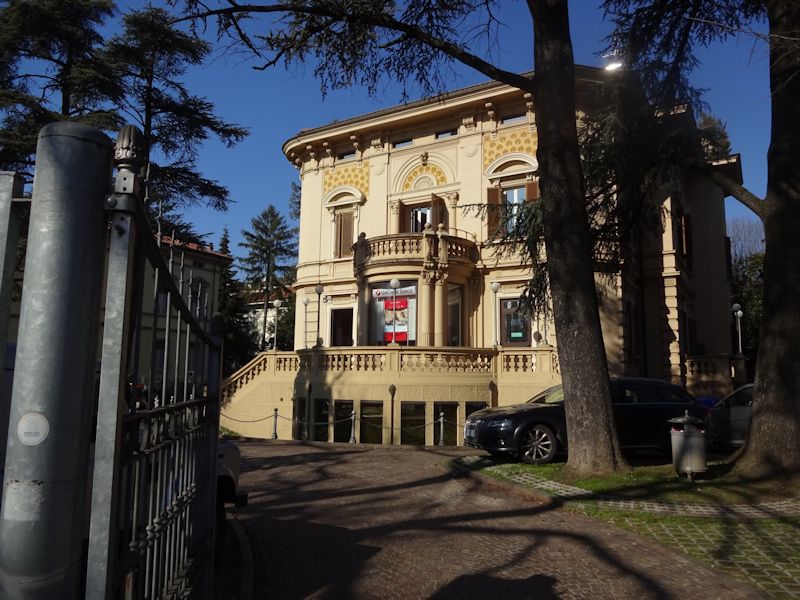
The local bank offices, UniCredit Banca
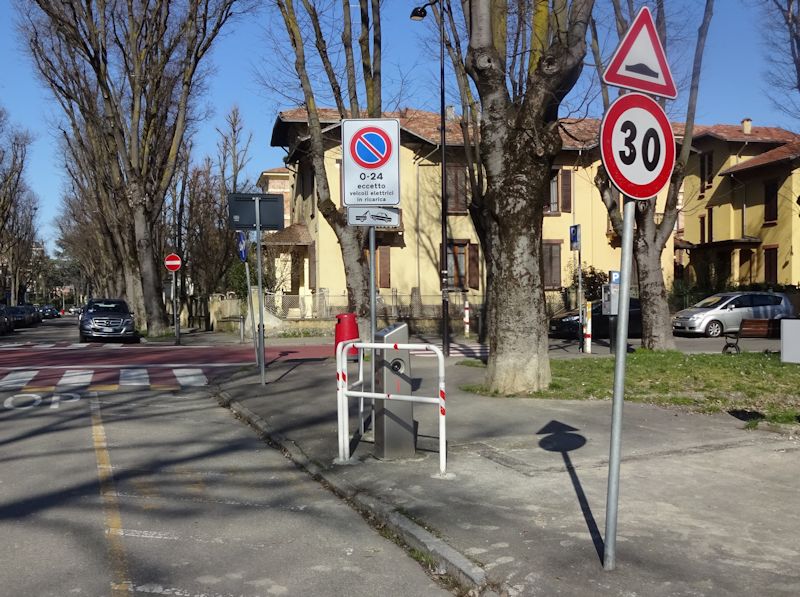
A sidewalk filling station for electric cars, how convenient

That's the northern gatehouse of the Citadel or Cittadella, a fortress built at the long-gone city walls, ordered up in 1591 by Alessandro Farnese, the 3rd Duke of Parma. It's modeled on the Fortress of Antwerp in the Spanish Netherlands, where Parma was serving as commander of the Spanish military at the time.
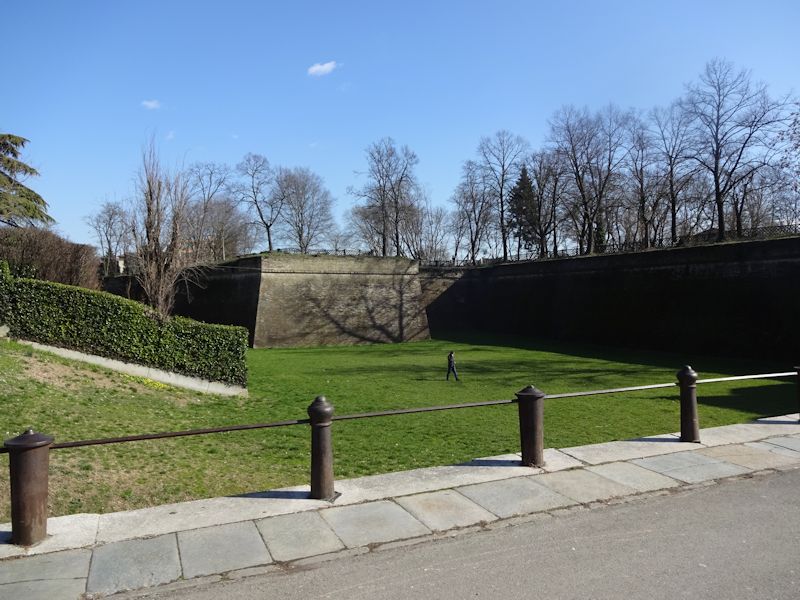
The northeastern bastion and the former moat. The fortress is on the model of the 16th century trace italienne revolution in fortifications brought about by the widespread use of artillery in warfare: a star-shaped configuration with artillery bastions (five in this case) looking both outward and back along the walls to provide "enfilading" fire if the bad guys got too close, and with dirt-and-rubble embankments that can absorb cannonfire that would have shattered medieval castle walls. Wealthier northern Italian cities were experimenting with these ideas after experiencing the advanced artillery that the French brought with them in the 1490s and early 1500s in the "Italian Wars" -- the innovation spread northward through Europe in succeeding decades, as northern cities saved up their pennies to pay for such luxuries.

The main gatehouse, facing towards the city, dates from 1596, with the Farnese arms looming out front. This star-shaped fortress design, often many times more complicated than this simple one in Parma, persisted in Europe for the next three centuries, culminating in the complicated crazy piles of interlocking levels by Louis XIV's prize engineer, Vauban, whose fortresses are a lot of fun to visit now that they're all municipal parks as well.
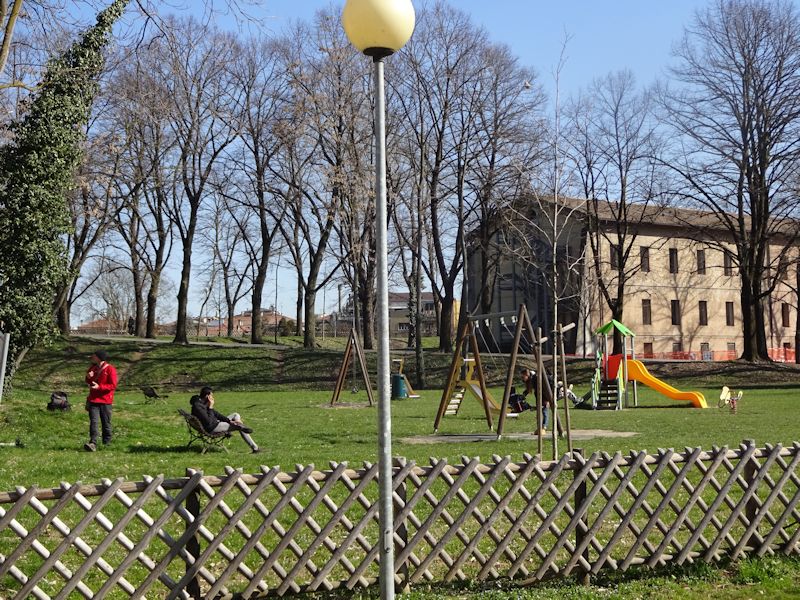
But with not much call for major downtown fortresses these days, at least for the time being, it's wisely been turned into the Parco della Cittadella.
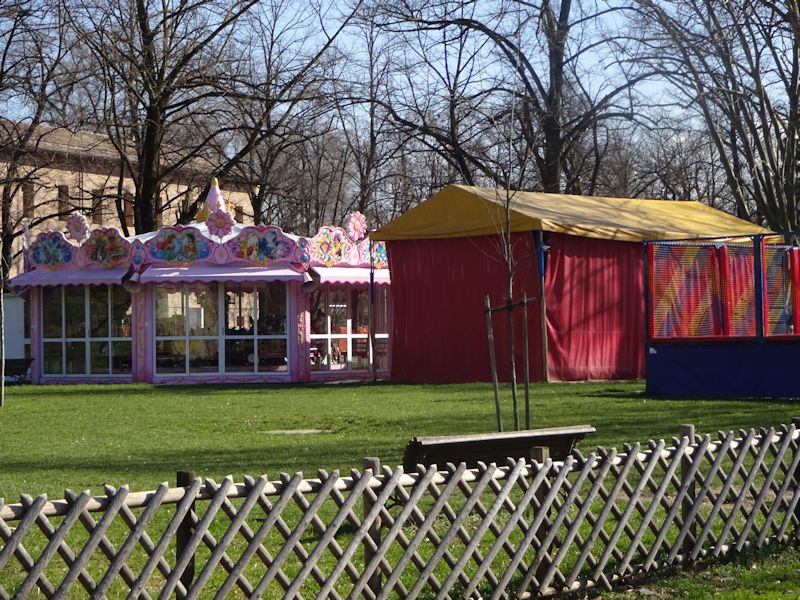
Bustling with shrieking fun in the summertime, and ice cream

The names of the savings bank Cassa di Risparmio di Parma pops up on the signage for a large number of civic amenities.
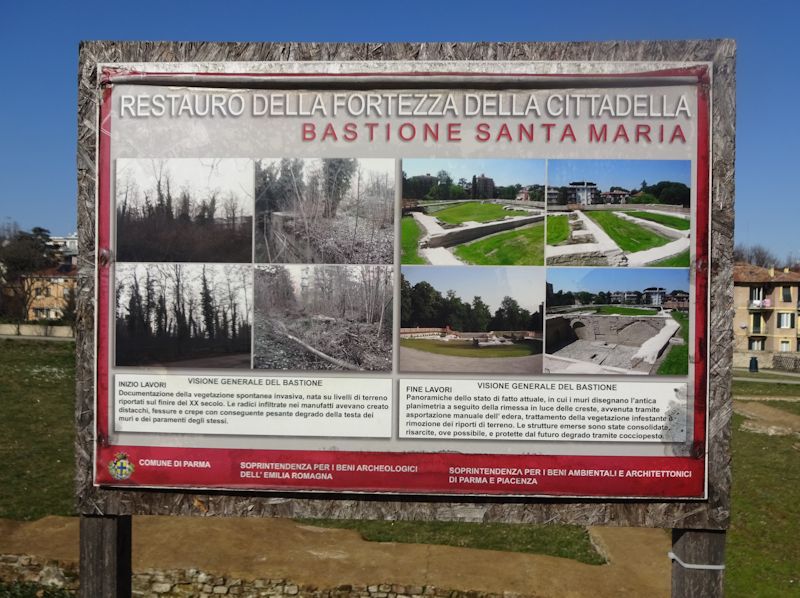
Before and after photos of the northeastern bastion's renovation in the late 20th century
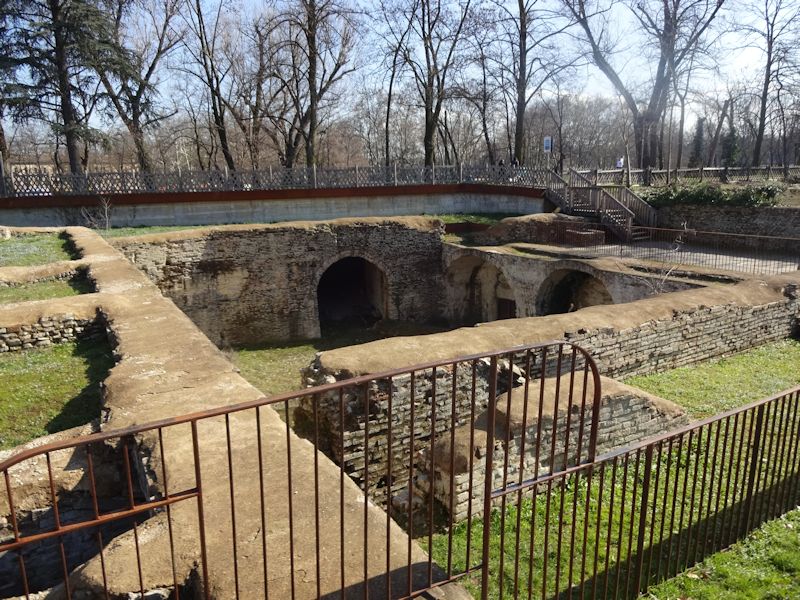
The casemates of the Bastion Santa Maria. The raised roadway all the way around inside the walls, skipping the detours out each of the bastions, is probably a good kilometre, and distance markers are laid out all round it so that walkers, joggers, and runners can calculate their speeds.

Looks like fun. We'd probably break it.

The Chiesa di Sant'Uldarico facing the Strada Farini heading back towards the Governor's Palace

An Italian Piedibus (the Ladybird Line). The pedibus is an organized way for volunteer moms to walk the little ones to and from school, passing fixed 'bus stops' at specified times to pick up 'passengers' holding hands two by two.
Compare our Pédibus line in Ollon, Switzerland

|
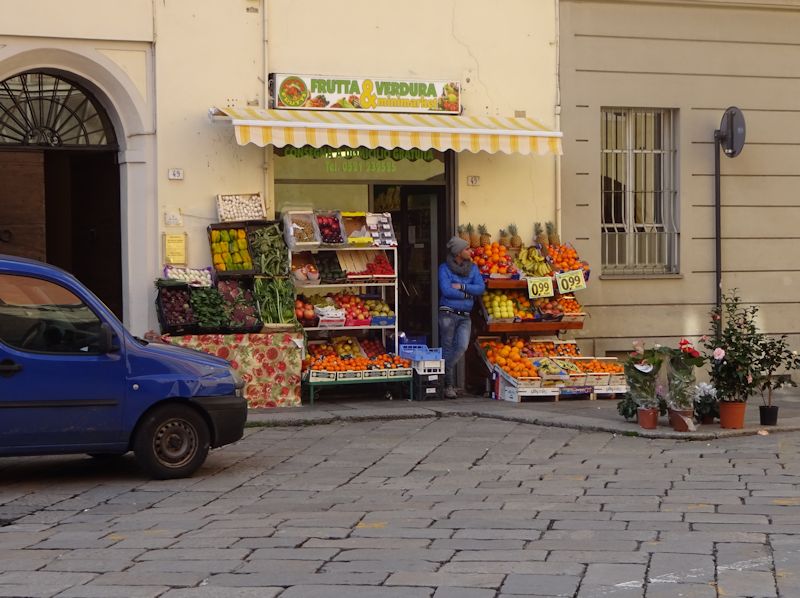
Frutta & Verdura (& Minimarket)

We're still processing northward on the beautiful Strada Luigi Carlo Farini
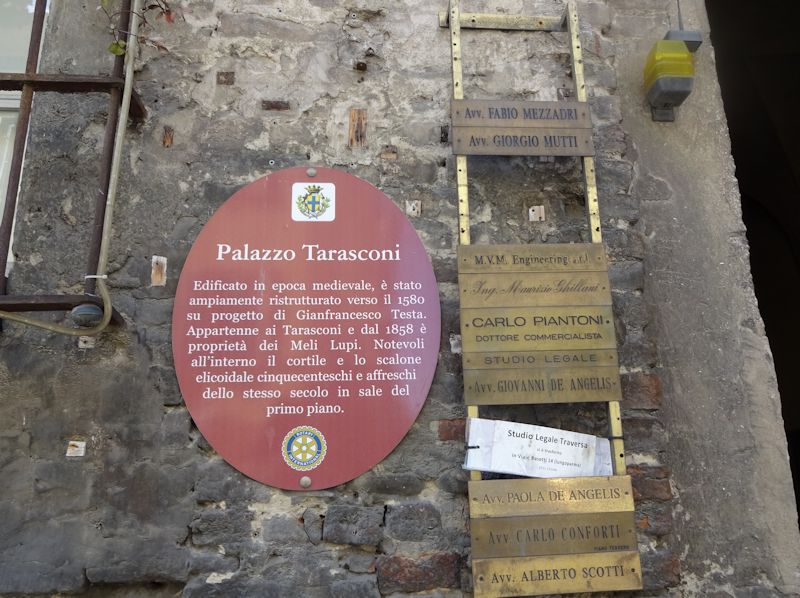
Any northern Italian palazzo that is not still occupied by the medieval family or presently a civic museum is likely housing law offices.
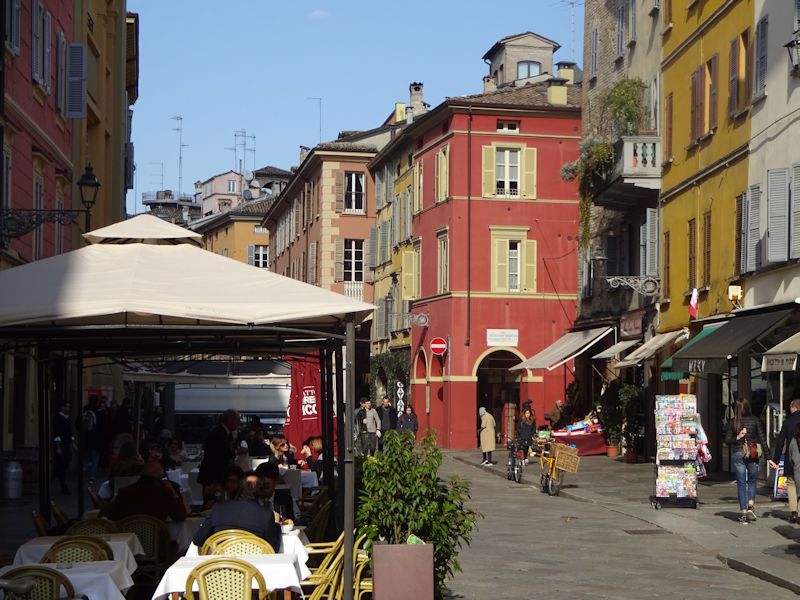
Time for lunch; yum, good idea.

Street scene
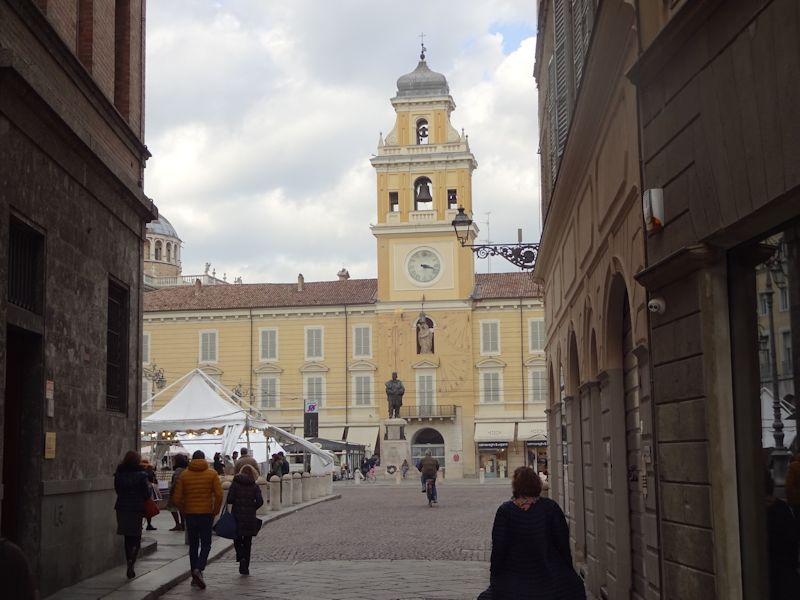
The Piazza Garibaldi again

The artisanal Chocolate Fair is finally in progress.

We're unmoved; that's not one of our vices.

The Palazzo del Comune from the 13th century, largely rebuilt by Duke Ranuccio I after the collapse of its tower in 1606 wrecked a lot of it. Within the ground floor arcade there was a 'corn market' (a public market place for cereal crops) and a customs warehouse.

Presently adorned, since 1870, by this partially convincing statue of Correggio

Attached to the Palazzo del Comune is the Palazzo del Podestà (with La Duchessa restaurant downstairs)

-- Please, there are children here. The fountain dates from 1829, but the pointless cliché Hercules copper statue by a guy named 'Van der Sturck', so he claimed, was done in the 1680s and is the last surviving statue from the decorations in the Ducal Park during the Farnese period.
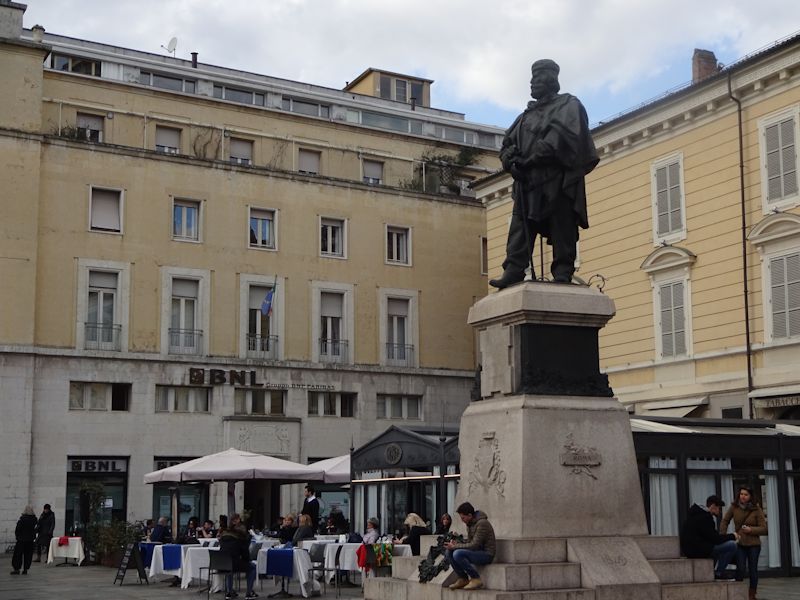
There's a little more dignity to that one.
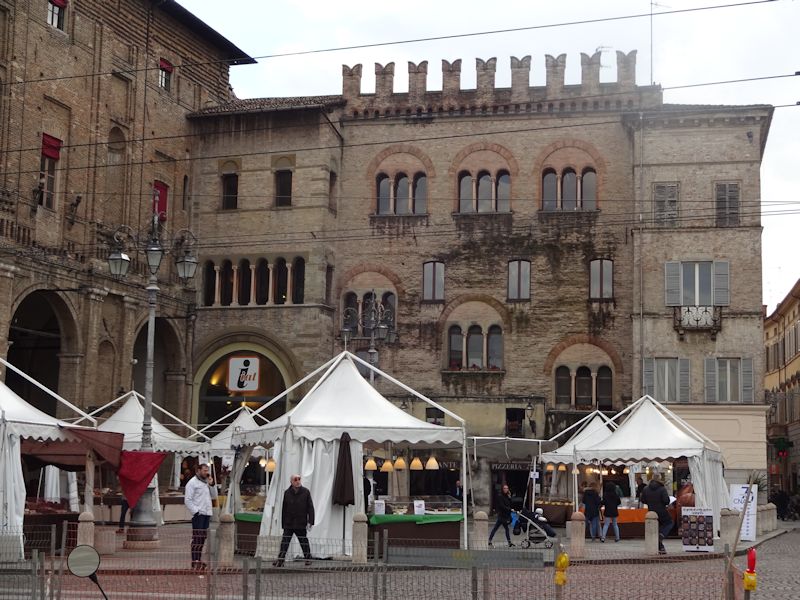
Chocolate and palazzo -- and ristorante; we'll be back for dinner in about an hour and a half.
      
 Feedback
and suggestions are welcome if positive, resented if negative, Feedback
and suggestions are welcome if positive, resented if negative,  .
All rights reserved, all wrongs avenged. Posted 5 April 2016. .
All rights reserved, all wrongs avenged. Posted 5 April 2016.
|
 Dwight Peck's personal website
Dwight Peck's personal website
































































